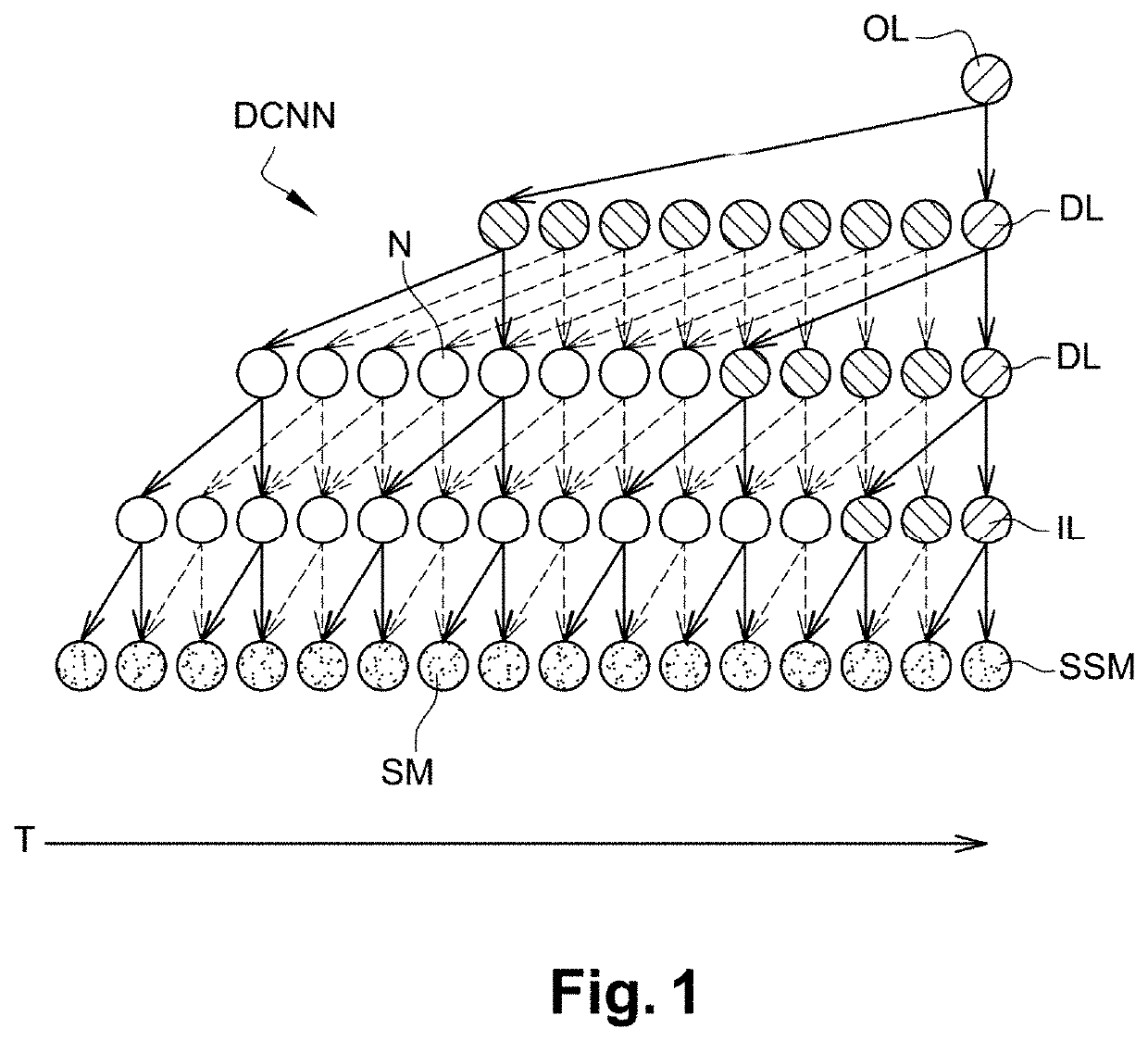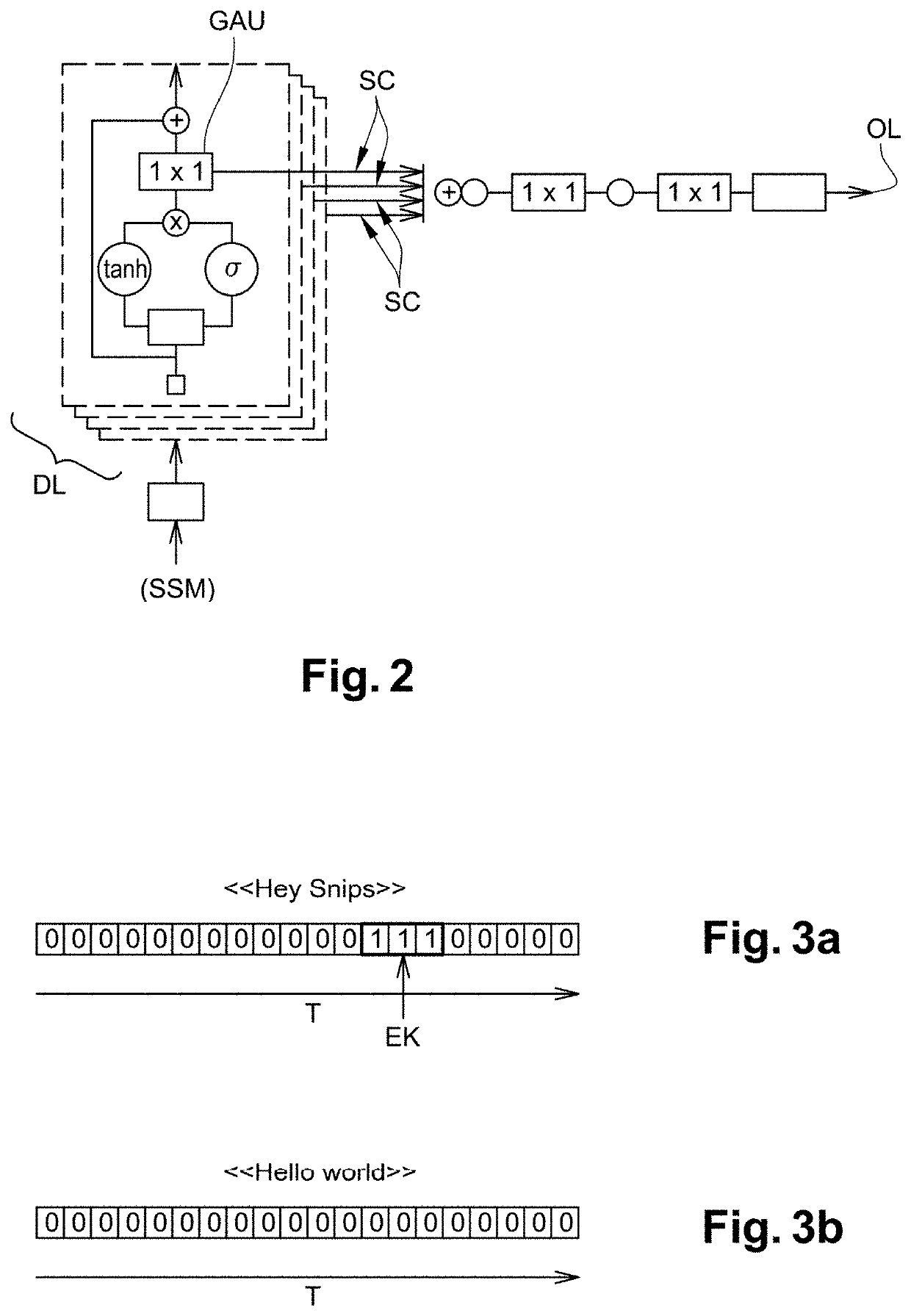Dilated convolutions and gating for efficient keyword spotting
- Summary
- Abstract
- Description
- Claims
- Application Information
AI Technical Summary
Benefits of technology
Problems solved by technology
Method used
Image
Examples
Embodiment Construction
[0027]An embodiment of a computer implemented method for keyword detection in a continuous stream of audio signal, using a computer implemented dilated convolutional network, will be described in reference to FIGS. 1 and 2.
[0028]According to an embodiment illustrated in FIG. 1, a continuous audio-stream is fragmented into a sequence SSM of successive measurements SM, each successive measurement SM resulting from the measurement of one or more acoustic features on a frame extracted from the continuous audio stream. According to an embodiment, the acoustic features are 20 dimensional log-Mel filterbank energies measured on successive frames extracted from the audio stream every 10 ms, each frame having a 25 ms duration.
[0029]As illustrated in FIG. 1, the sequence SSM of successive measurements SM is provided as an input to a computer implemented dilated convolutional neural network DCNN.
[0030]FIG. 1 illustrates the configuration at a given time step of the inference process for keywor...
PUM
 Login to View More
Login to View More Abstract
Description
Claims
Application Information
 Login to View More
Login to View More - R&D
- Intellectual Property
- Life Sciences
- Materials
- Tech Scout
- Unparalleled Data Quality
- Higher Quality Content
- 60% Fewer Hallucinations
Browse by: Latest US Patents, China's latest patents, Technical Efficacy Thesaurus, Application Domain, Technology Topic, Popular Technical Reports.
© 2025 PatSnap. All rights reserved.Legal|Privacy policy|Modern Slavery Act Transparency Statement|Sitemap|About US| Contact US: help@patsnap.com


